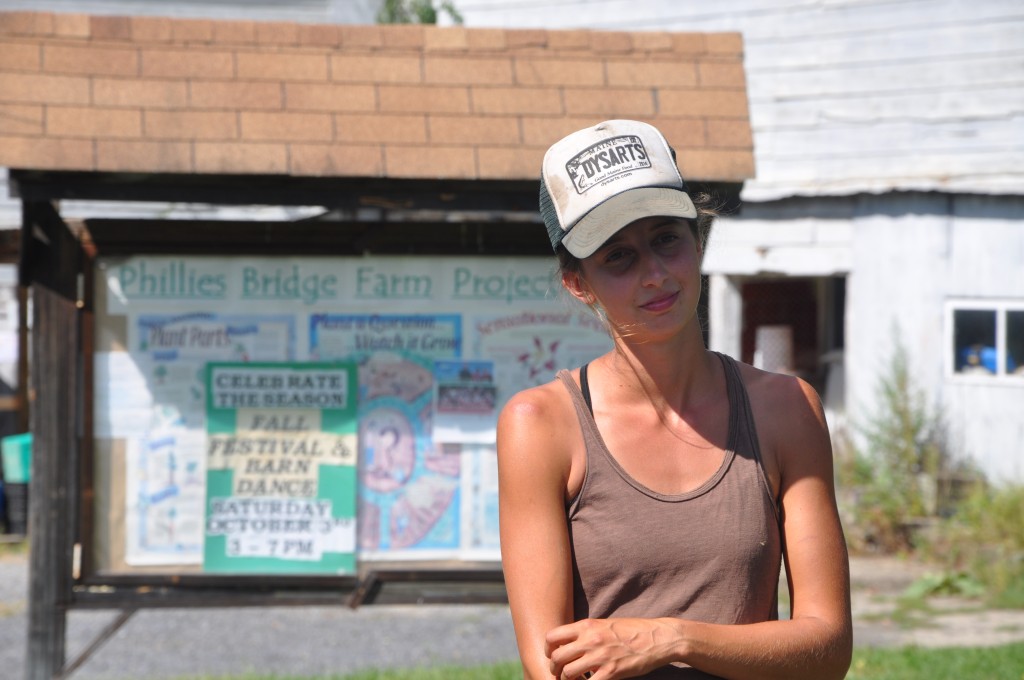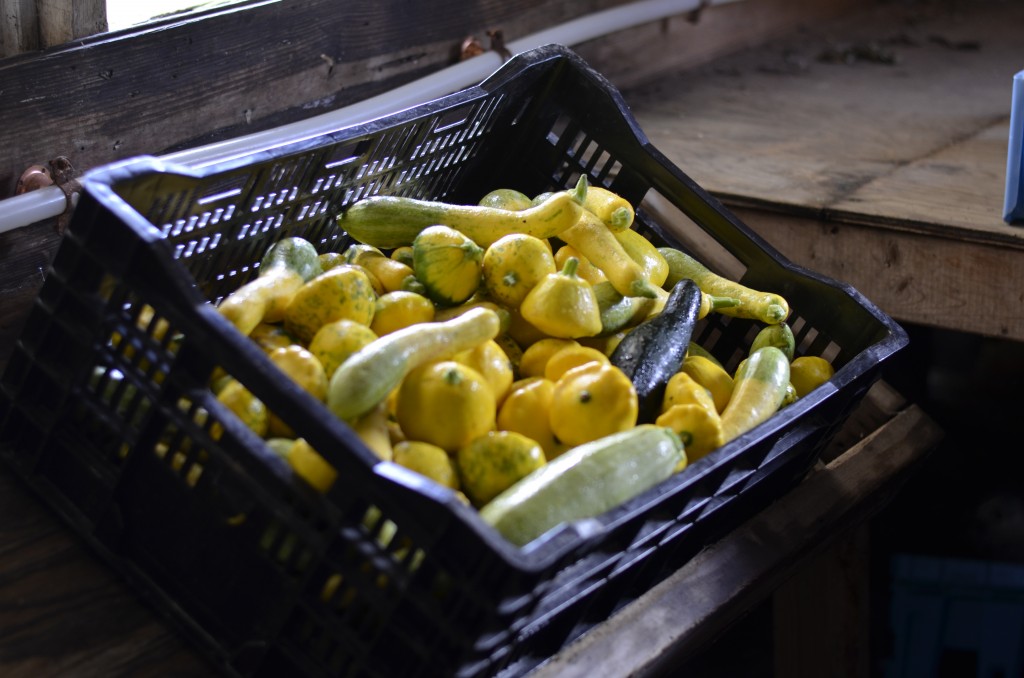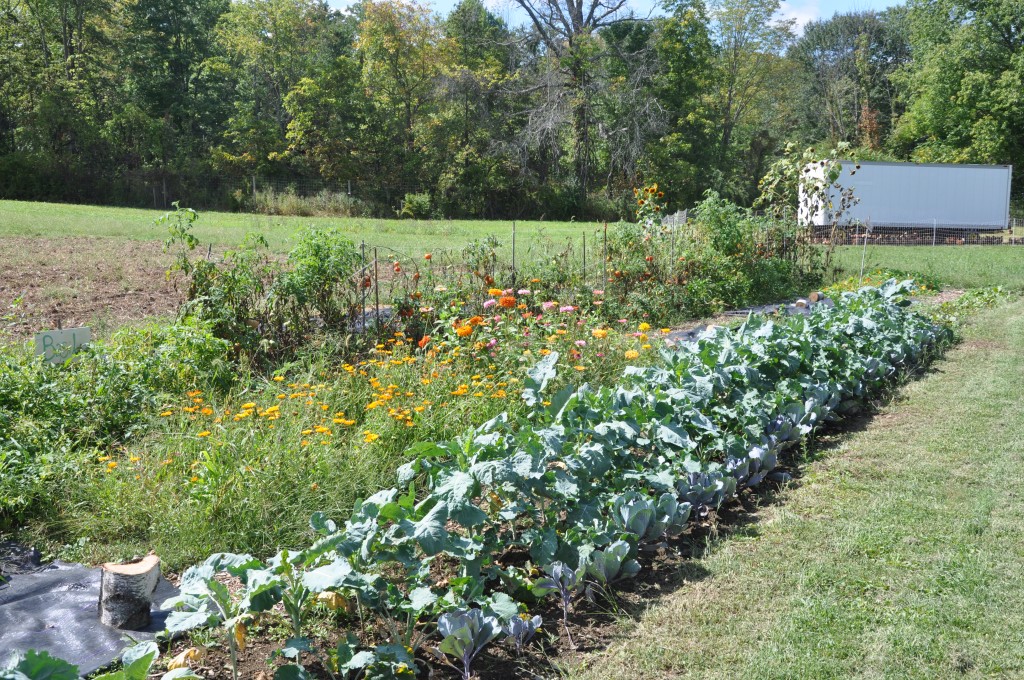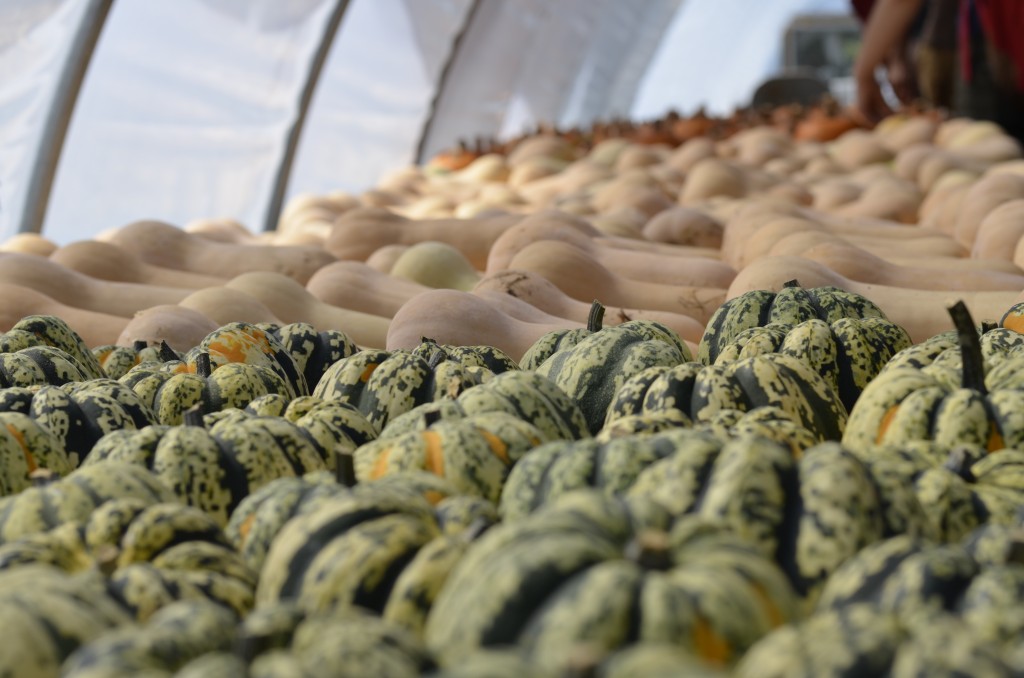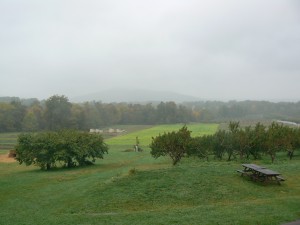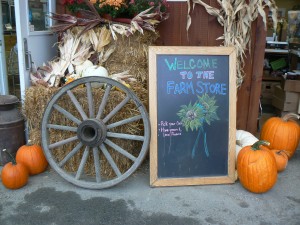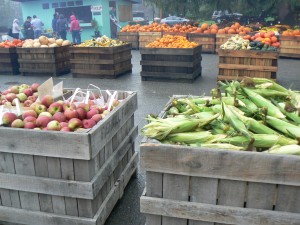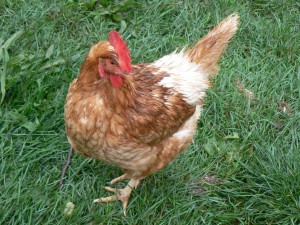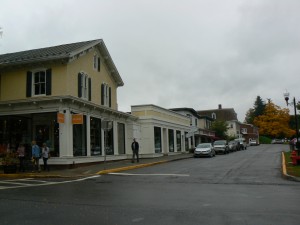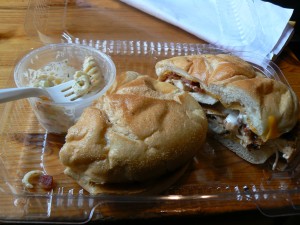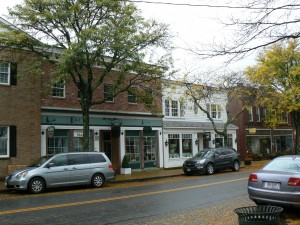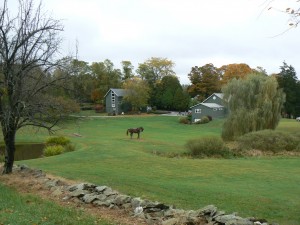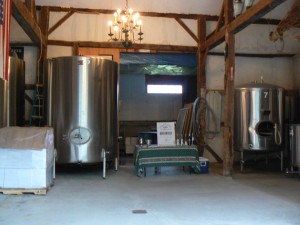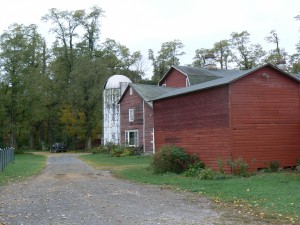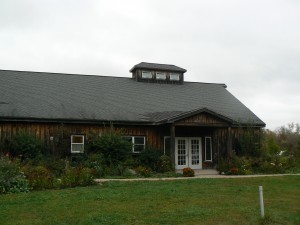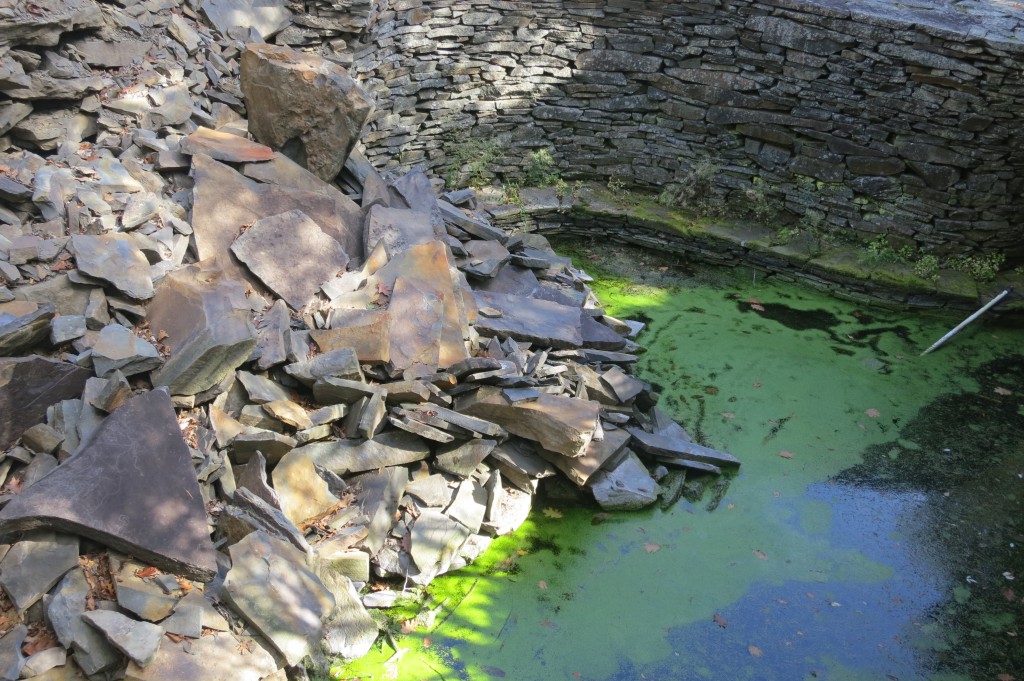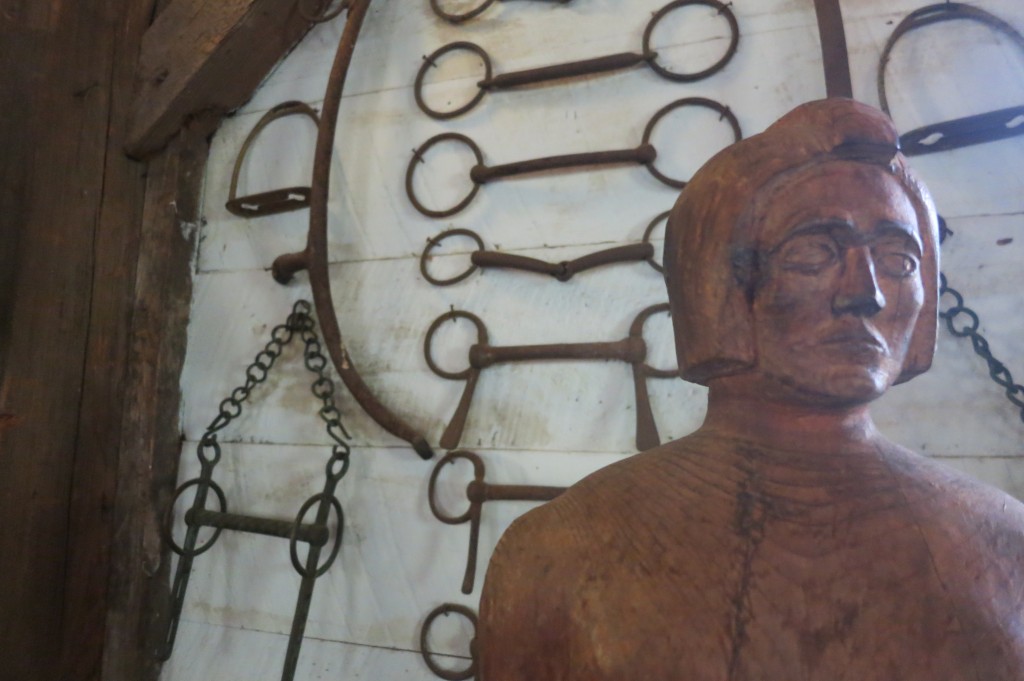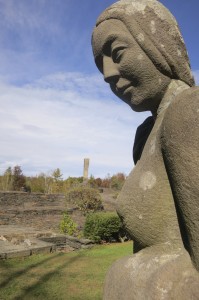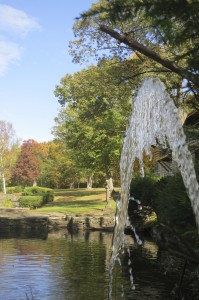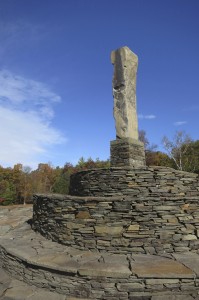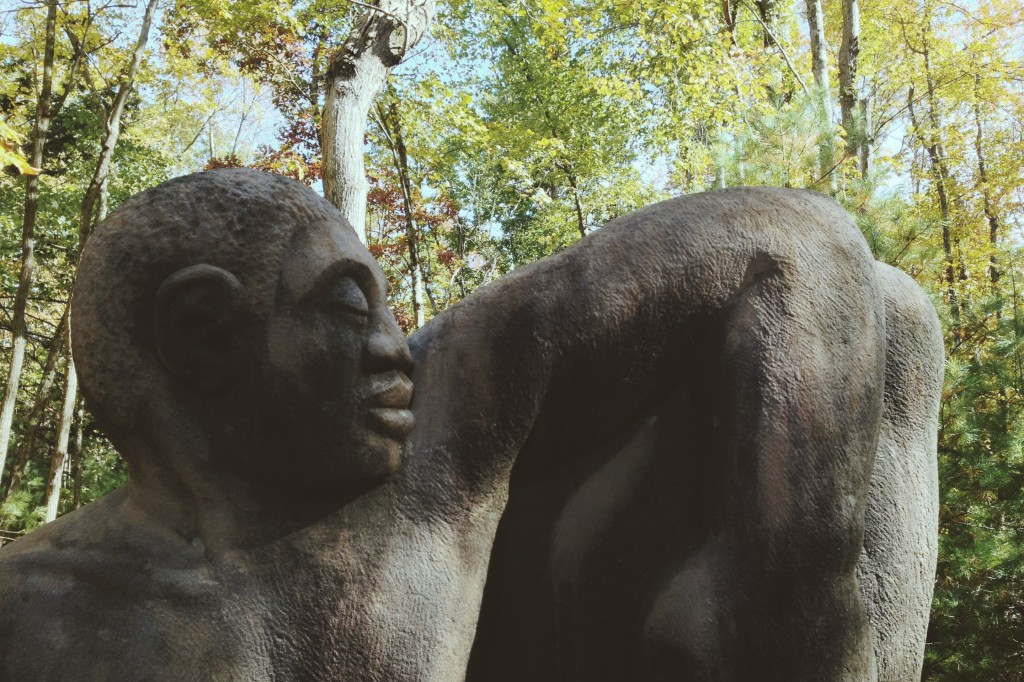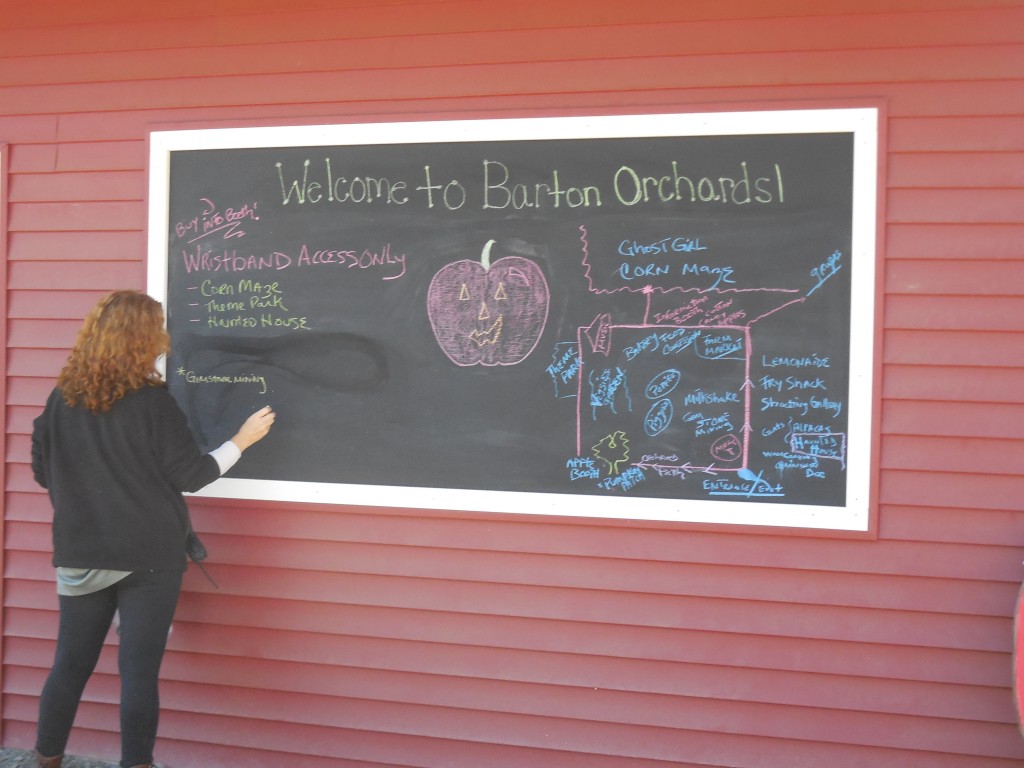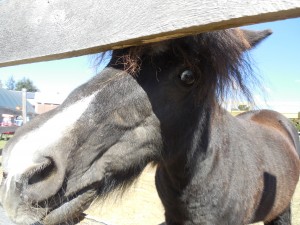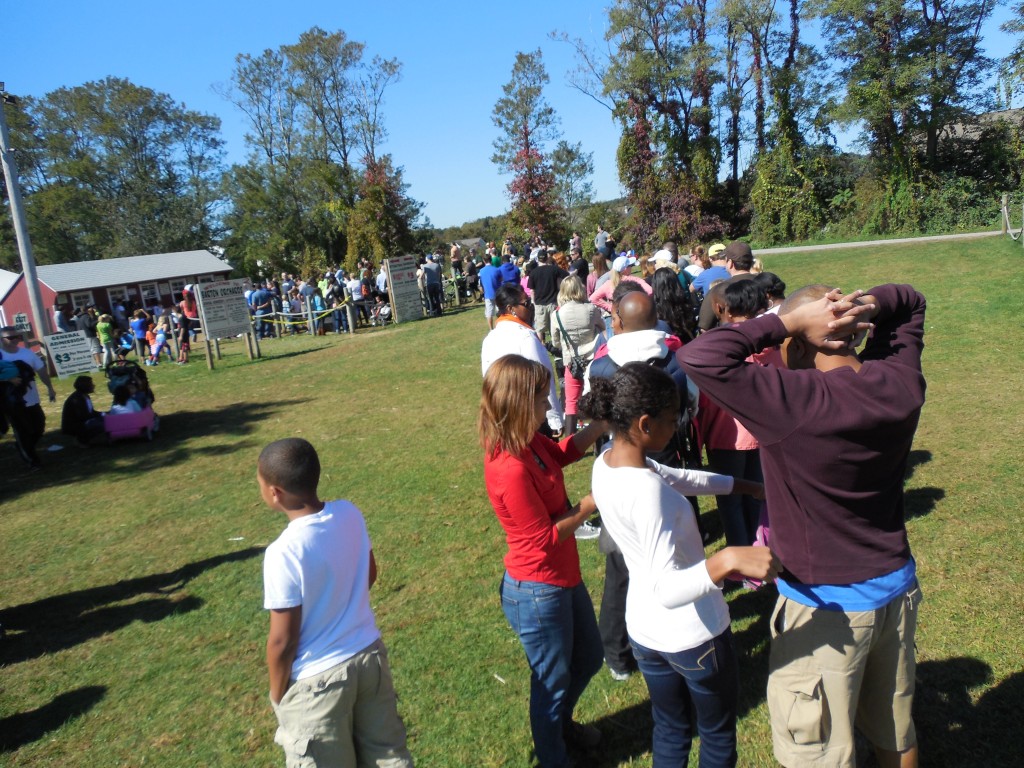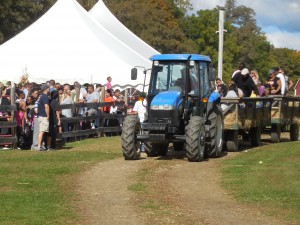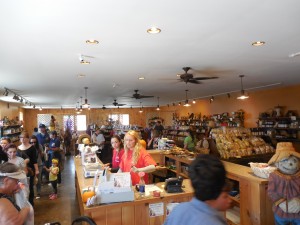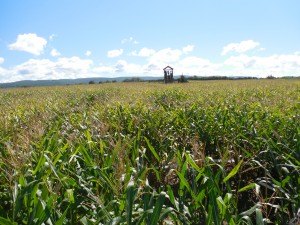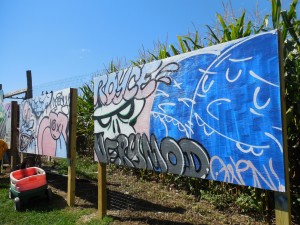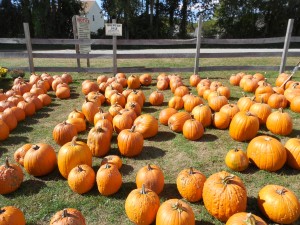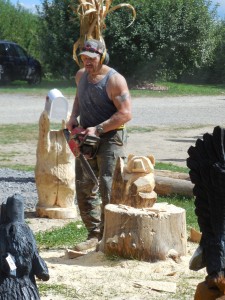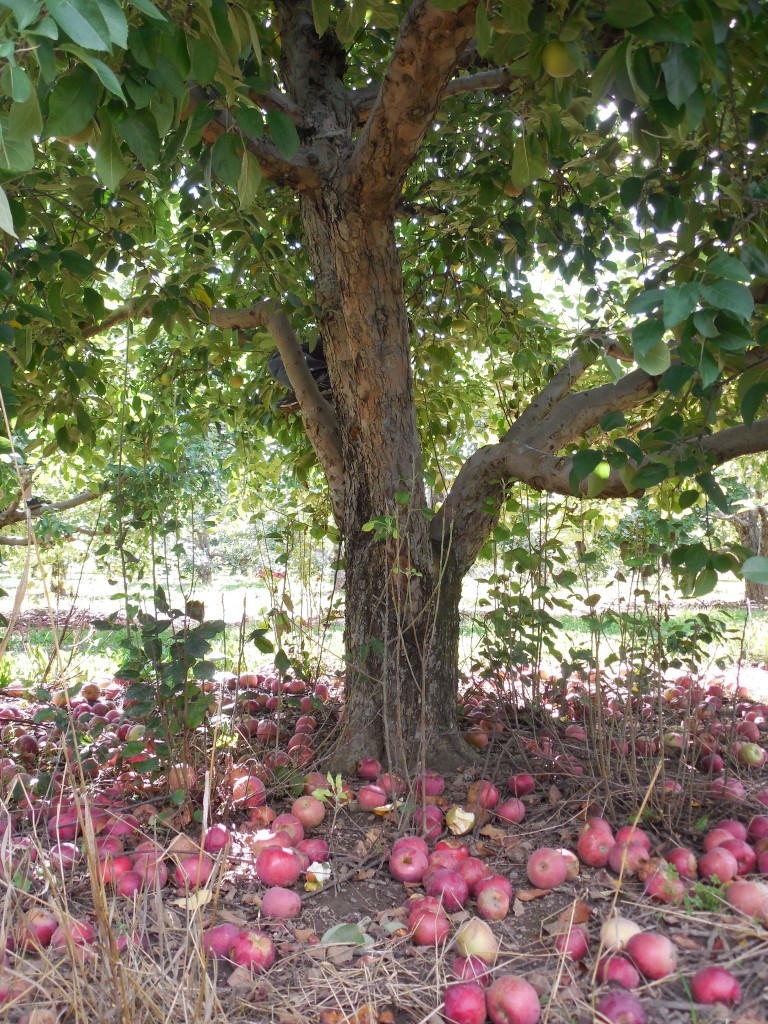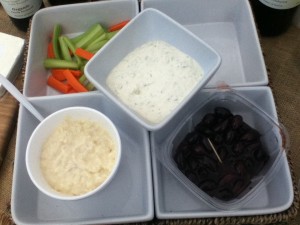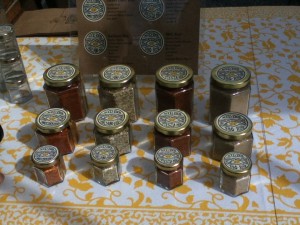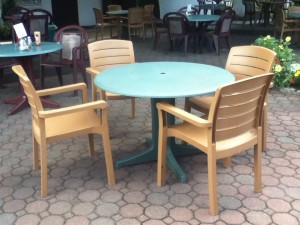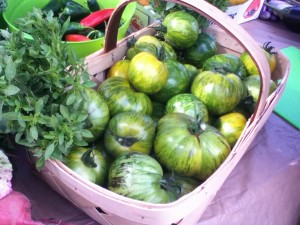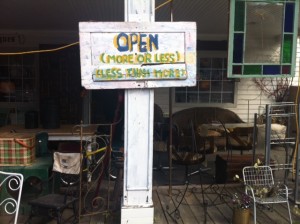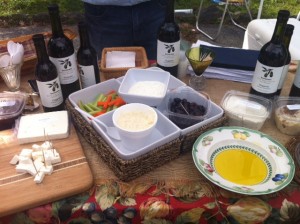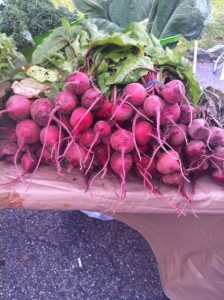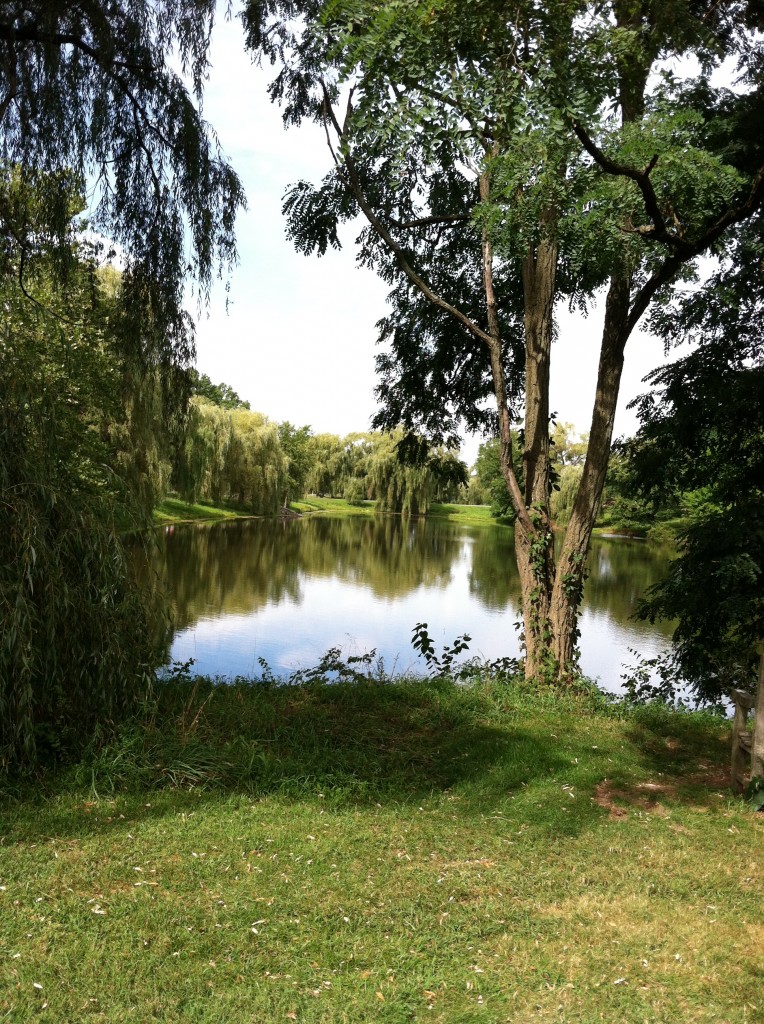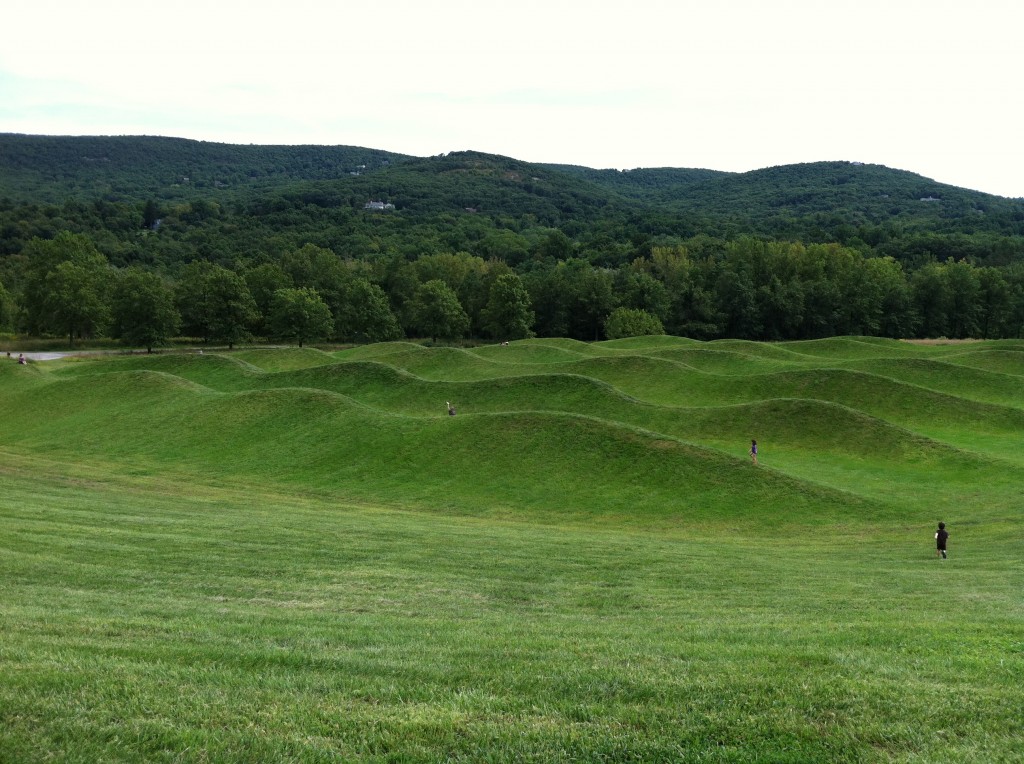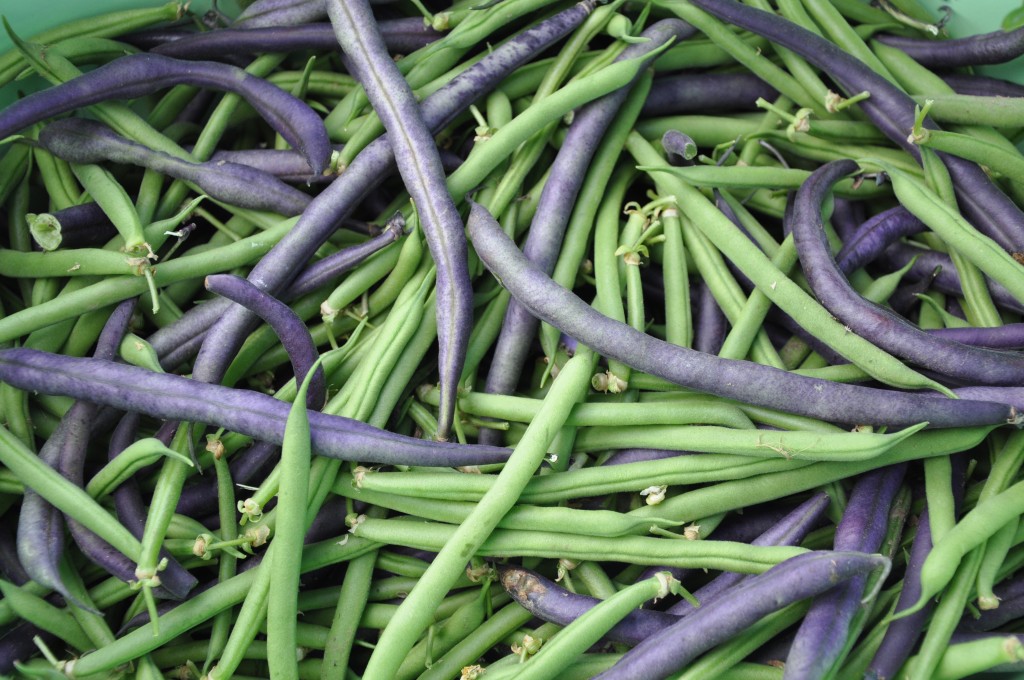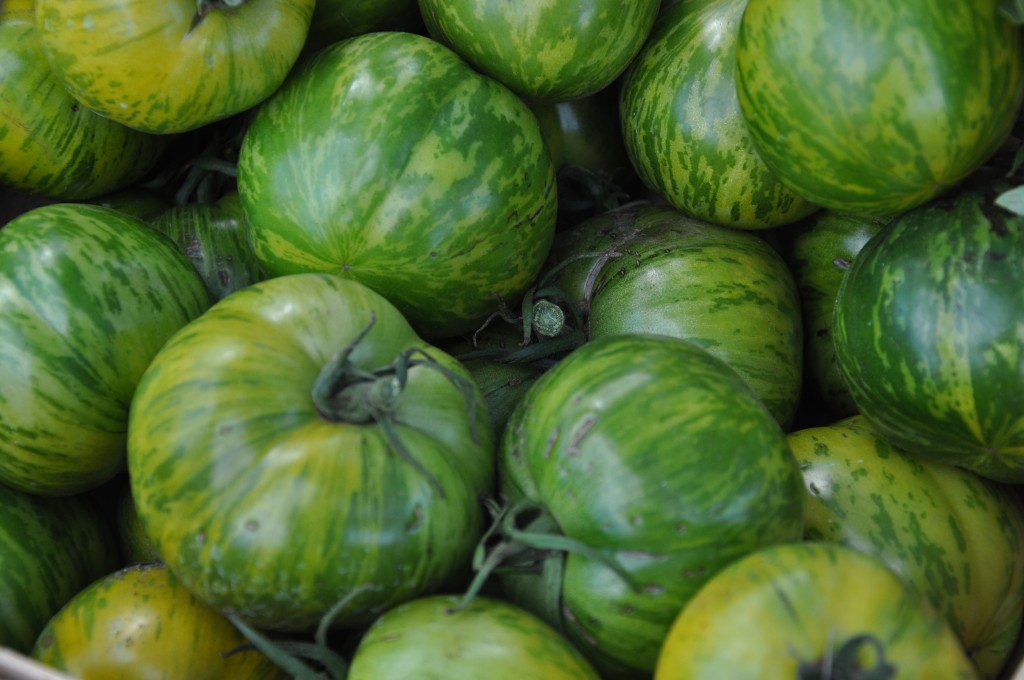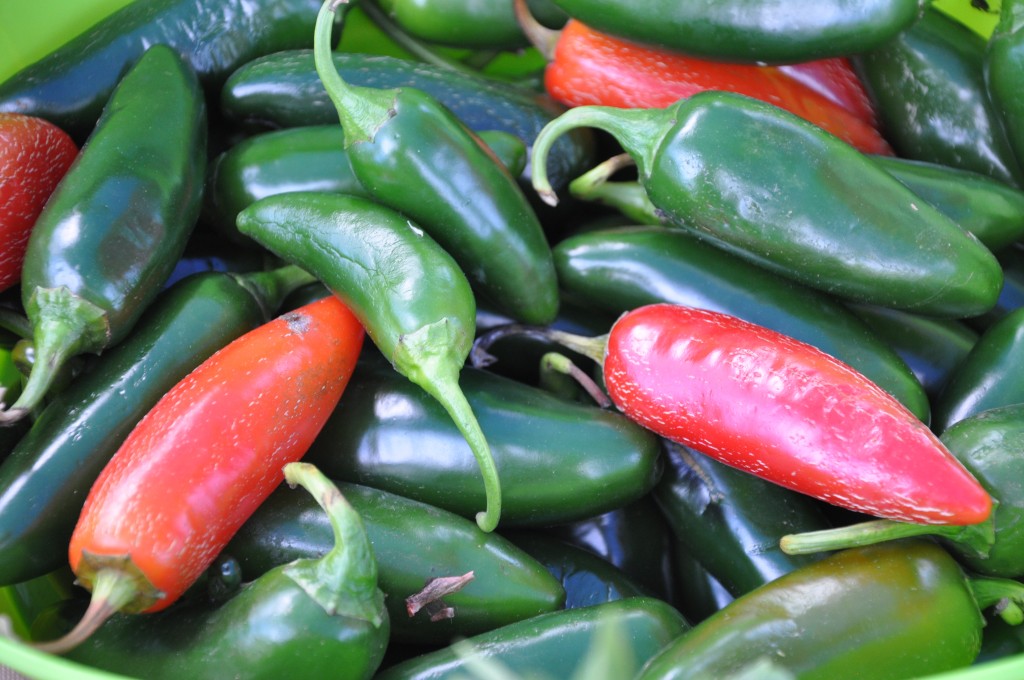Last Friday afternoon, we embarked on our second field trip exploring the scenic Hudson Valley to the Phillies Bridge Farm Project. Located just south of New Paltz, Phillies Bridge Farm is a nonprofit working farm located on 65 acres of land. It focuses primarily on producing vegetables, herbs, and flowers for Community Supported Agriculture (CSA) shareholders as well as continuing education programs that engage the community in hands-on learning about food and farming.
Our visit was guided by Anna Elbon, the current manager at Phillies Bridge Farm. A Tennessee native, Anna was a environmental-studies-turned-agricultural-science major at McGill University in Montréal, Quebec, Canada, where she managed the student-run farm. During her studies, she was interested in the ecological sustainability aspect of farming. Someday, she hopes to own her own farm. After working on other farms in Quebec and New Hampshire, Anna came to the Hudson Valley to begin work at Phillies Bridge in January 2015. This is her first year managing the farm, and it is hard work as she is one of just three people on the farm staff, but she is doing a stellar job. She is the only full-time salaried employee. Two apprentices work with her (and a third is hired over the summer). Other than that occasionally some dedicated volunteers come to help out when need for labor is high. One of their most dedicated volunteers is a member of the board of directors. Phillies Bridge has an entirely volunteer run board of directors to help manage and make decisions for the farm.
Phillies Bridge was one of the first CSA share farms in the Hudson Valley, dedicated to providing fresh, affordable, locally-grown produce to the community and allowing shareholders to develop a connection to the sources of their food. Currently about one-hundred CSA shareholders pick up an estimated $25 to $30 (the shares are sold on a sliding scale in order to increase accessibility) worth of produce each week from June through October and also have access to a “u-pick” garden and unlimited pick-your-own herb garden. A full share is enough produce to feed a family of four. Optimally, the farm’s goal is to have 120 shareholders every season. So, things are a little tight financially this year. However, the farm has been making up for that by selling some of their produce wholesale to local stores. They tend to grow a lot of excess, as they cultivate a full five acres and the farm is able to successfully harvest 90 to 100% of what they plant. While wholesale provides a good additional source of income, the farm is still trying to figure out if it is something that they want to further pursue and invest in. Since they always have so much extra production, Anna is considering cutting back on the amount of land they grow on each season in order to cut down on labor. Scaling back like this would allow them to concentrate more on growing their CSA. She says that what they really need to focus on is more marketing for the CSA. Right now people mainly hear of it through word of mouth, but if it were to be more heavily marketed a lot of interest and new participation would likely be generated. Phillies Bridge is a much smaller operation than Fishkill Farms, which we visited last week. For this reason, it is much harder for them to spend the time telling the historic and cultural story of the farm and engaging in the agritourism sector. They have to spend a lot of their time managing the five acres and so it is difficult to put the time into selling the story of the farm as well as the physical products of it. However, Phillies Bridge does have a rich history that many agritourists would find very appealing. It dates back to the 18th century and used to be a dairy farm. Now, it is an integral part of the local community.
While the farm is not certified organic, they do follow organic and sustainable growing methods such as the use of cover crops and crop rotation. When necessary, they try to use organic insecticides and minimize spraying whenever possible.
Another wonderful thing about Phillies Bridge Farm Project is that it provides a portion of each season’s harvest to food-insecure households in Ulster County through their Farm-to-Families program. Their non-profit status them allows them to apply for grants which enable them to donate CSA shares.
In addition to the CSA, Phillies Bridge has started selling produce at the farmers market at SUNY New Paltz. While we were there, the two farm apprentices returned to the farm from their first day at the farmer’s market.
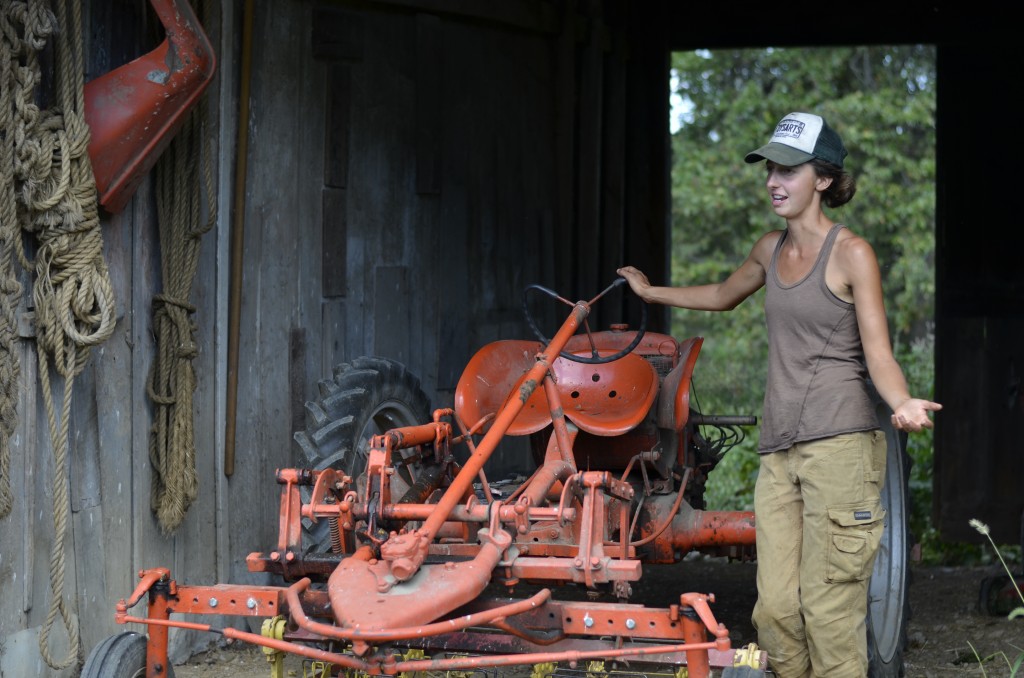 The other big component of Phillies Bridge are its many opportunities for education. This includes a summer camp, home school program, pre-school program, adult workshops, and field trips from tourists or groups of students like us. These visits provide the opportunity to learn how to seed, transplant, weed, cook, and see where food really comes from. Below is a picture of the special garden dedicated entirely to education. There are six staff members in the education department, outnumbering the staff that works on the farm. The education program, in addition to the CSA, is another major way in which Phillies Bridge engages with the local community in a meaningful way.
The other big component of Phillies Bridge are its many opportunities for education. This includes a summer camp, home school program, pre-school program, adult workshops, and field trips from tourists or groups of students like us. These visits provide the opportunity to learn how to seed, transplant, weed, cook, and see where food really comes from. Below is a picture of the special garden dedicated entirely to education. There are six staff members in the education department, outnumbering the staff that works on the farm. The education program, in addition to the CSA, is another major way in which Phillies Bridge engages with the local community in a meaningful way.
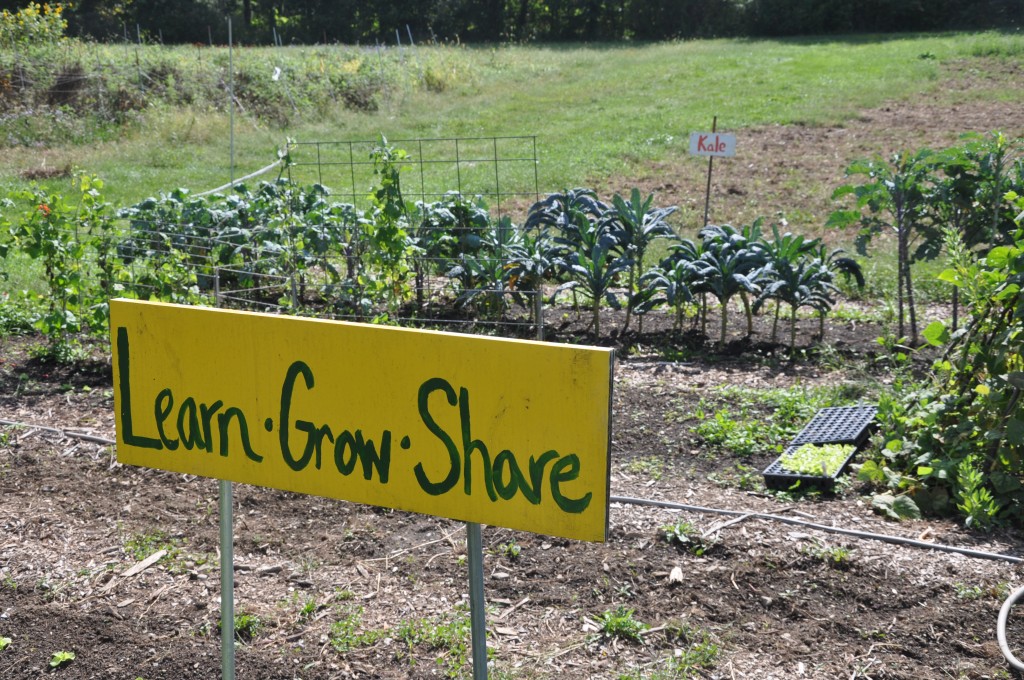
Anna led us around the Harvest Room, barns, greenhouse, and some of the fields used for vegetable production. Along the way we also got to meet some chicken and goat friends. Some of the chickens were visiting from a micro-dairy down the road. Phillies Bridge had kindly offered to host them for a while as the dairy had an owl problem. Unfortunately some hawks had discovered the presence of the chickens at Phillies Bridge and so they were all taking shelter under their coop. The goats at the farm are kept in a movable pen. They are rotated around and act essentially as natural lawn mowers. Additionally, they are pretty adorable, friendly, and surprisingly vocal.
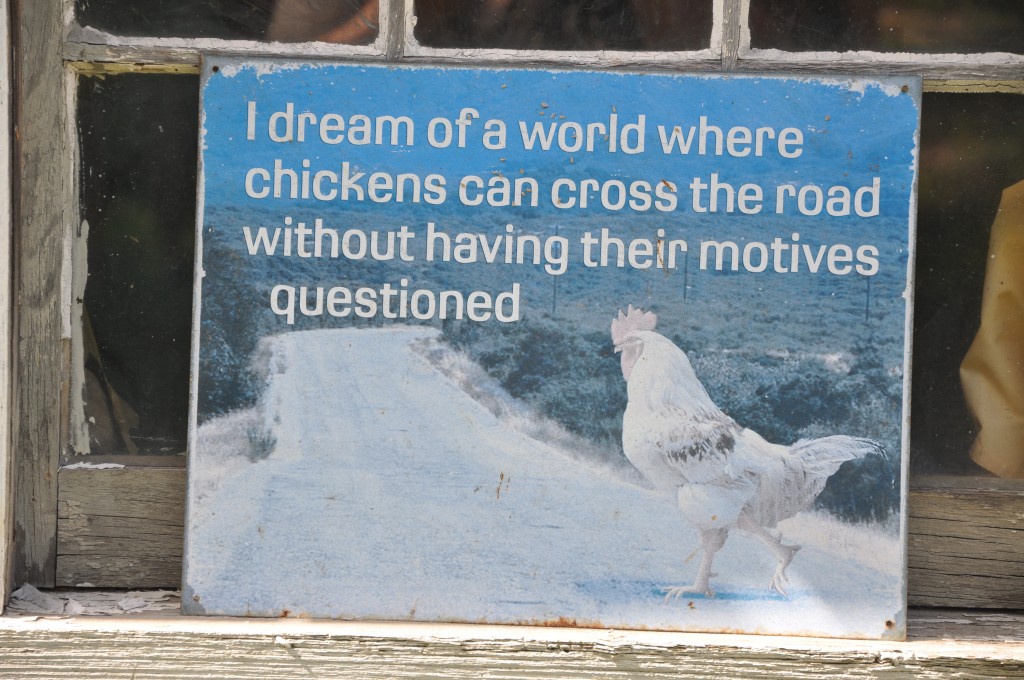
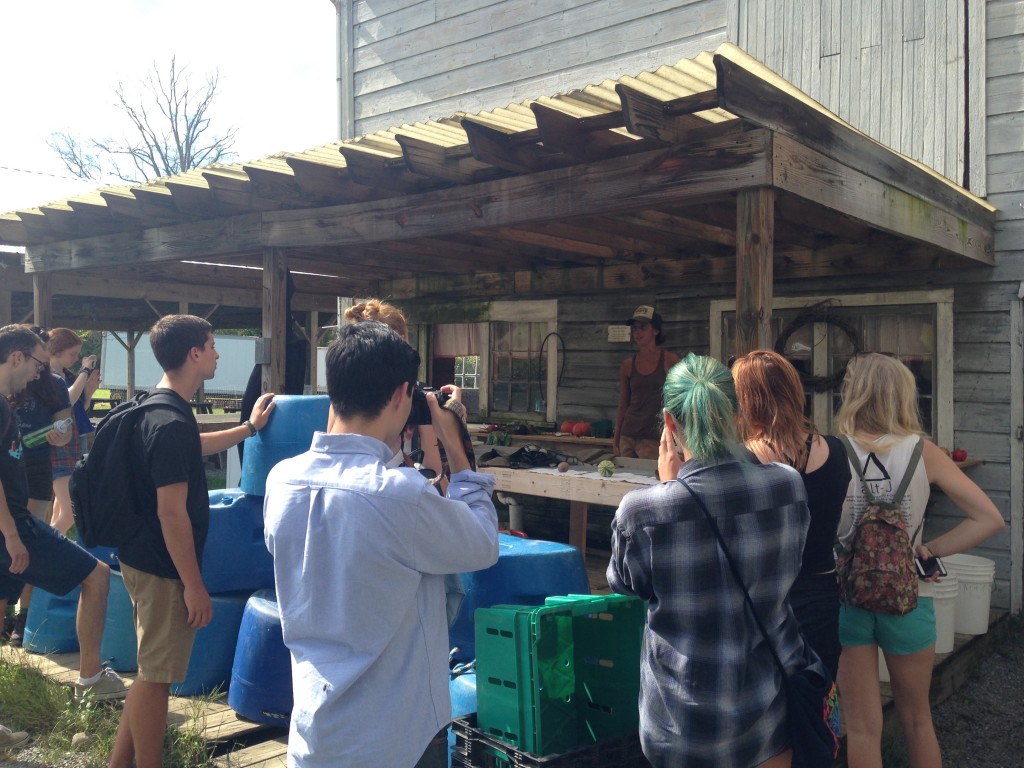

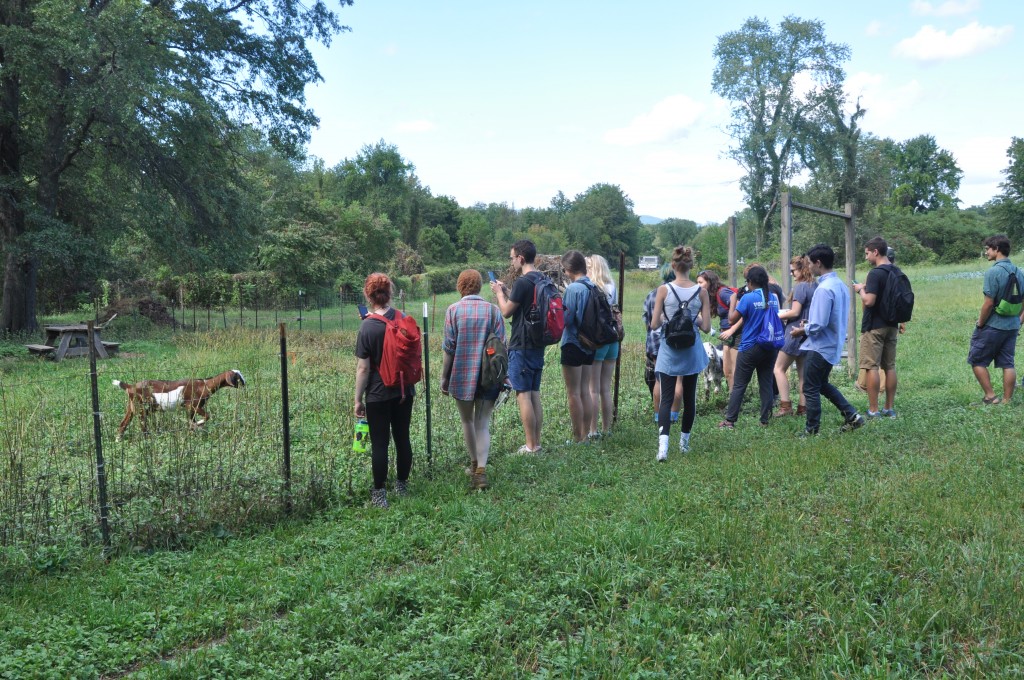
Whether you are an Ulster County local looking to learn more about and eat quality, sustainably-grown food or a native New Yorker searching for that nostalgia factor of the Hudson Valley, you will find what you are looking for at Phillies Bridge Farm Project.
By Natalie & Elise


